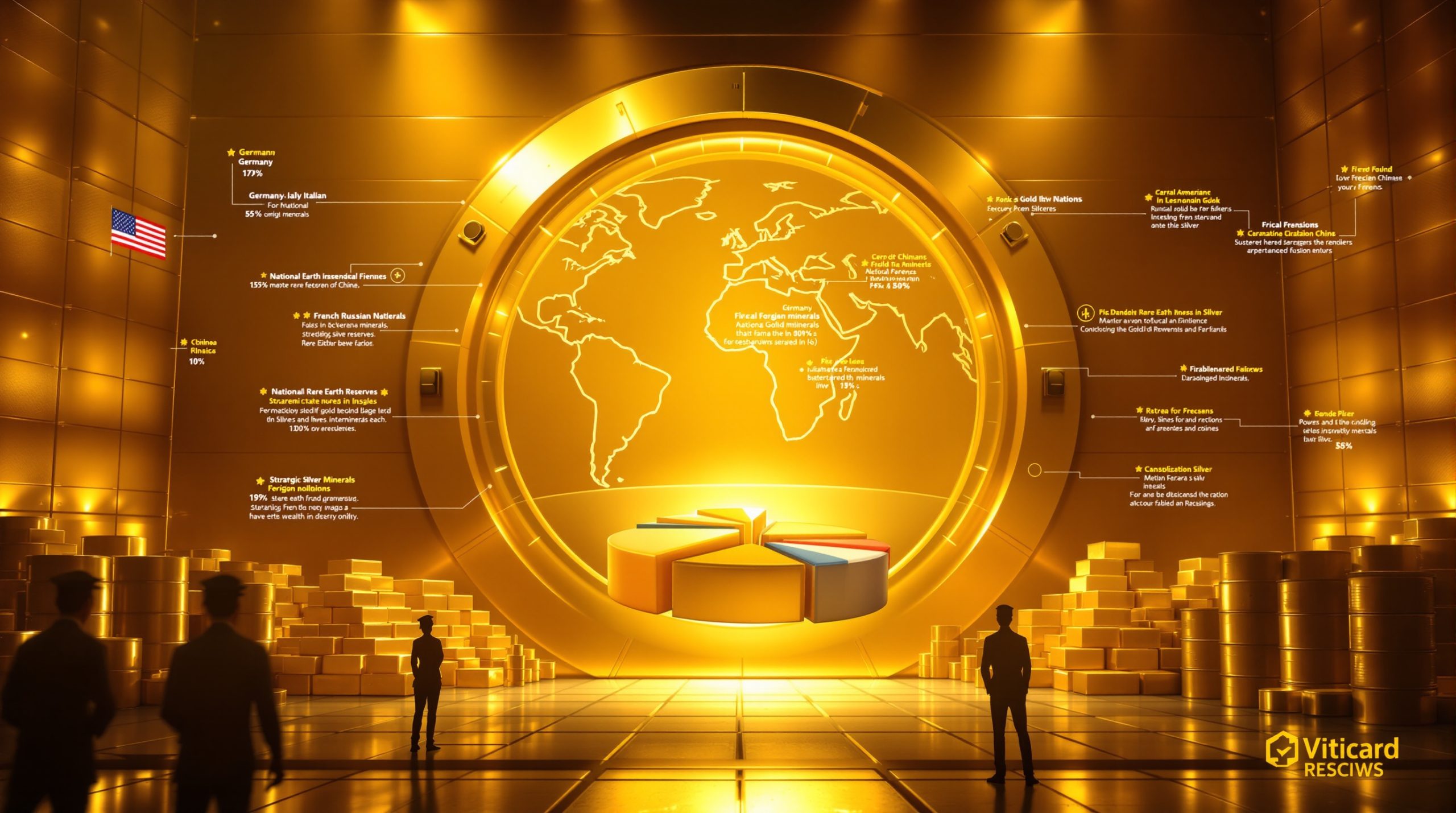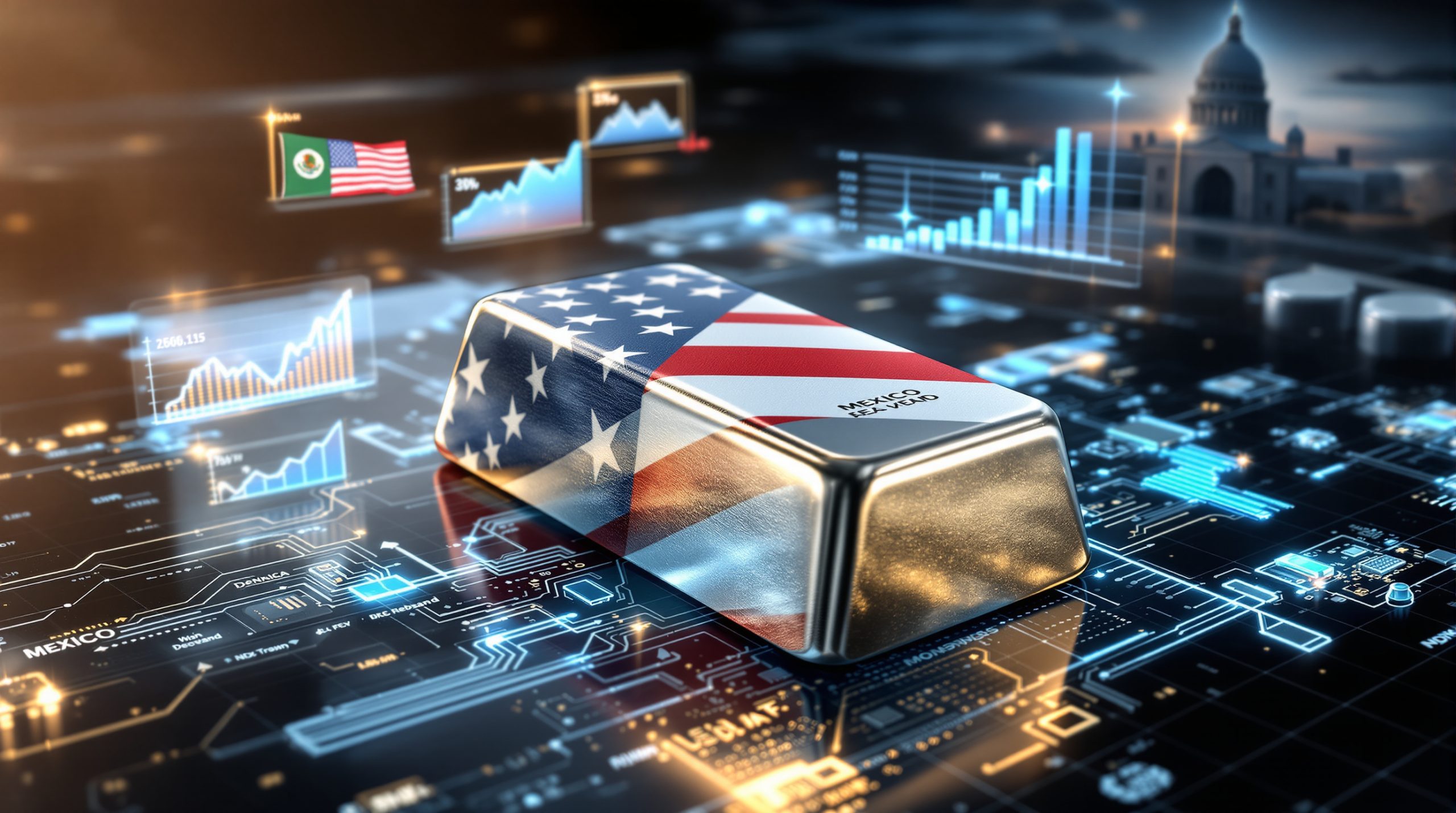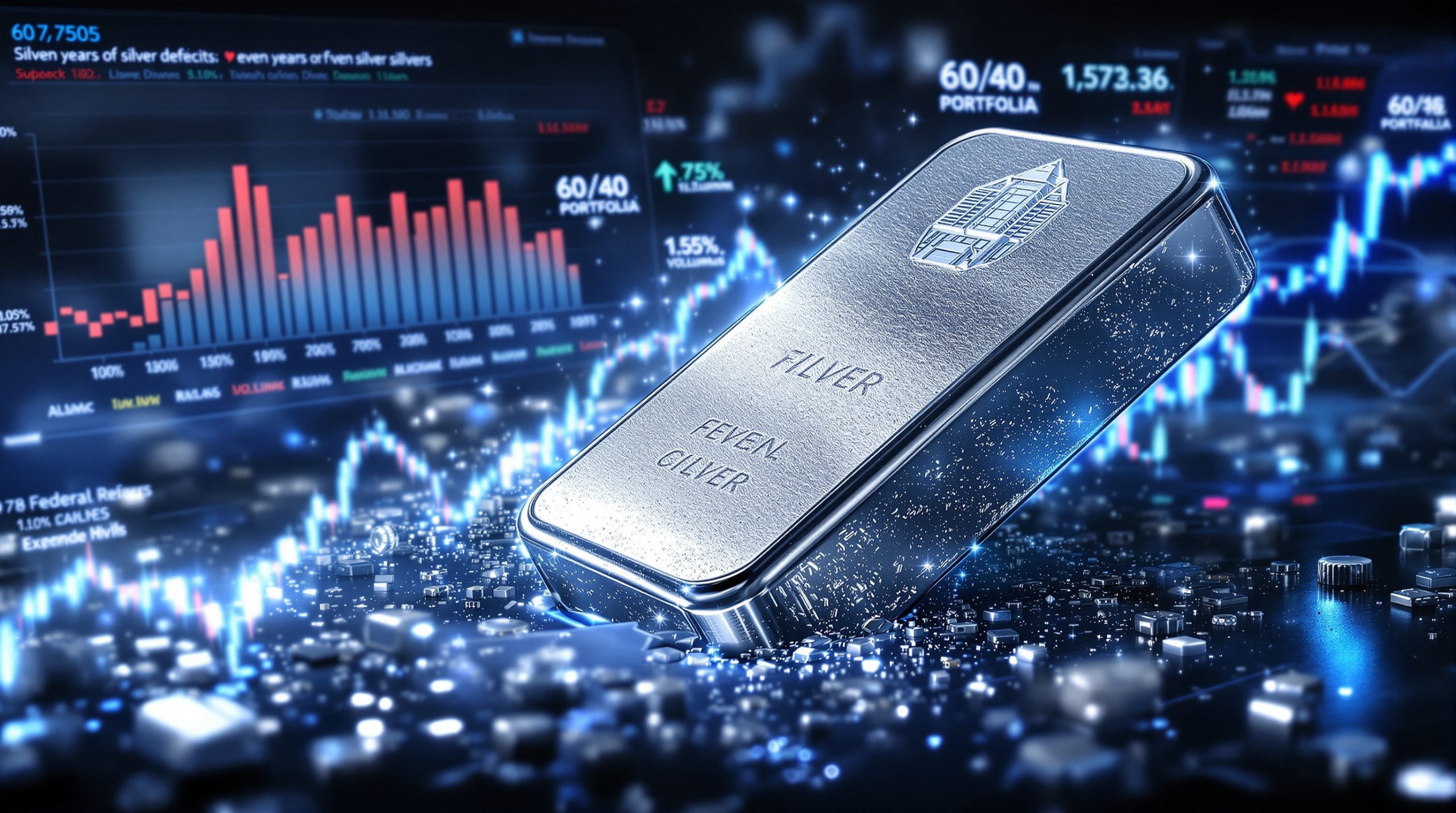Understanding the Basics: What Are Critical Minerals?
Critical minerals are raw materials deemed essential for economic and national security, yet vulnerable to supply chain disruptions. These include rare earth elements (REEs) like neodymium and dysprosium, as well as minerals such as antimony, bismuth, cobalt, gallium, and tungsten. Unlike common minerals, these resources combine strategic importance with limited availability and geopolitical complexity.
The U.S. Geological Survey officially designates 50 minerals as "critical," with 24 specifically highlighted for defense applications. These minerals form the foundation of modern technology, from smartphones to fighter jets, and increasingly, critical minerals in energy transition.
Definition & Examples
Critical minerals are characterized by three key factors:
- Strategic importance: Essential for advanced technologies, defense systems, or energy transition
- Supply risk: Concentrated production in a limited number of countries
- Limited substitutability: Few or no viable alternatives exist for their applications
The most prominent critical minerals include:
- Rare Earth Elements (REEs): A group of 17 chemically similar metallic elements used in magnets, catalysts, and electronics
- Antimony: Enhances flame resistance in military vehicle components
- Bismuth: Used in medical applications and as a lead replacement
- Tungsten: Vital for hardening steel in defense applications
- Cobalt: Essential for lithium-ion batteries and jet engines
- Gallium: Used in semiconductors, LEDs, and 5G infrastructure
Why Are They "Critical"?
Critical minerals earn their designation through a complex interplay of technological necessity and geopolitical vulnerability. Their criticality stems from three primary factors:
Essential Applications
These minerals form the backbone of modern technology and defense systems:
- High-tech electronics: Smartphones, computers, and advanced sensors
- Defense systems: Guidance systems, night vision, and communications equipment
- Clean energy: Wind turbines, solar panels, and electric vehicle batteries
"The clean energy transition alone is projected to increase demand for critical minerals by 500% by 2050, creating unprecedented pressure on global supply chains," according to World Bank estimates.
Supply Chain Vulnerabilities
The production of critical minerals is highly concentrated, creating significant supply risks:
- China controls approximately 70% of global rare earth production
- The U.S. imports 70% of its rare earth elements from China
- For some minerals like gallium, U.S. dependence on Chinese imports reaches as high as 92%
Processing Bottlenecks
Mining is only part of the equation; refining and processing create additional vulnerabilities:
- China refines 90% of global cobalt and lithium
- Specialized processing facilities take years and billions to develop
- Environmental regulations in Western nations increase production costs
How Did Critical Minerals Become a Strategic Lever for China?
China's dominance in critical minerals didn't happen by accident. Through decades of strategic investment and policy support, Beijing transformed what was once considered a niche mining sector into a powerful geopolitical lever. This evolution represents one of the most successful examples of industrial policy in modern history.
China's Dominance by the Numbers
China's control over critical minerals extends far beyond its borders, creating global dependencies that provide significant geopolitical leverage:
| Mineral | China's Global Production Share | China's Global Processing Share | Primary Applications |
|---|---|---|---|
| Rare Earth Elements | 70% | 85% | Magnets, electronics, defense |
| Gallium | 80% | 95% | Semiconductors, 5G |
| Graphite | 65% | 85% | Batteries, aerospace |
| Bismuth | 82% | 80% | Medical, metallurgy |
| Antimony | 55% | 65% | Flame retardants, batteries |
This dominance extends throughout the supply chain:
- Mining: Massive operations in Inner Mongolia, Sichuan, and Jiangxi provinces
- Processing: Concentrated in specialized industrial parks in Ganzhou and Baotou
- Manufacturing: Vertical integration with magnet production and component assembly
- Export controls: 14 strategic minerals placed under export restrictions since 2024, including recent China export controls on bismuth
Development of Strategic Weaponization
China's transformation from mineral producer to geopolitical player evolved over several decades:
1980s-1990s: Foundation Building
- Chinese leadership identified rare earths as a strategic sector
- Government subsidies encouraged mining expansion
- Environmental regulations remained minimal, lowering production costs
2000s: Market Dominance
- Western mines closed, unable to compete with Chinese prices
- China acquired foreign mining assets and processing technology
- The industry consolidated under state-influenced companies
2010s: First Strategic Applications
"Beijing's 2010 rare earth embargo against Japan previewed current tactics," notes SCMP analyst Fan Chen. "When territorial disputes arose over the Senkaku/Diaoyu Islands, China demonstrated that mineral access could be weaponized."
That 2010 embargo sent a clear message:
- Rare earth prices surged 97% within months
- Japanese manufacturers scrambled for alternatives
- Western nations began reassessing supply vulnerabilities
2020s: Systematic Leverage
China's approach has become increasingly sophisticated:
- Targeted export controls now align with broader trade objectives
- 2024: Germanium exports restricted after Netherlands joined U.S. semiconductor controls
- Customs authorities intensified scrutiny of mineral shipments under export control laws
"Critical minerals, such as rare earth elements, have emerged as tools of geopolitical strategy, where national control equates to significant global leverage."
Why Are Critical Minerals Particularly Vulnerable in the Ongoing US-China Trade Conflict?
The critical minerals in US-China trade war represent a perfect storm of vulnerability in the escalating tensions between the two powers. Unlike other trade categories, minerals combine strategic importance with extreme supply concentration and limited substitutability.
US Dependency on Chinese Supply Chains
American dependence on Chinese minerals extends far beyond simple trade statistics, creating vulnerabilities that affect core national security capabilities:
Defense Applications
The U.S. military's reliance on Chinese minerals creates strategic vulnerabilities:
- A single F-35 fighter jet requires approximately 417kg of rare earth materials, according to Prof. Wang Xiaosong of Renmin University
- Each F-35 contains 920 components that depend on rare earth elements
- A U.S. Air Force internal report concluded that a "6-month REE shortage would halt 85% of aircraft production"
- A 2025 Department of Defense audit revealed that 73% of munitions plants lack alternative mineral suppliers
Critical Technology Sectors
| Technology | Critical Minerals Required | Chinese Market Share | U.S. Applications |
|---|---|---|---|
| Guided missiles | Neodymium, samarium | 85% | Precision targeting |
| Night vision | Gallium, germanium | 92% | Battlefield awareness |
| Communications | Gallium, indium | 80% | Secure networks |
| Armor | Antimony, tungsten | 55% | Vehicle protection |
| Naval systems | Bismuth, beryllium | 82% | Reactor cooling, sonar |
Strategic Industry Vulnerability
Beyond defense, critical sectors face similar dependencies:
- Renewable energy: 90% of solar panel production relies on Chinese polysilicon and gallium
- Electric vehicles: China controls 78% of cathode material processing
- Telecommunications: 5G infrastructure depends on gallium and other Chinese-dominated minerals
Recent Incidents of Restricted Exports
China has increasingly used export controls and customs enforcement to restrict mineral flows:
High-Profile Enforcement Actions
- March 2025: Hong Kong customs authorities seized 25 tonnes of smuggled antimony bound for the United States
- April 2025: Guangxi border control intercepted 55.3% bismuth falsely declared as soldering paste
- January 2025: Three semiconductor firms faced rare earth quota reductions after supplying U.S. defense contractors
"The smuggling cases of controlled substances like antimony and bismuth demonstrate the lengths foreign companies may pursue in response to stringent export barriers."
Escalating Restrictions
China has steadily expanded its mineral export control regime:
- 2022: Initial export license requirements for gallium and germanium
- 2023: Expanded to include rare earth processing technology
- 2024: Added antimony, bismuth, and 10 other minerals to controlled list
- 2025: Implemented strict end-user verification requirements
Can the US Develop Alternative Sources of Critical Minerals?
As U.S. policymakers recognize the strategic vulnerability created by mineral dependence, efforts to develop alternative supply chains have intensified. However, these initiatives face significant challenges ranging from economic viability to environmental concerns.
Current Efforts & Initiatives by the US
The United States has launched multiple programs aimed at reducing mineral dependence, including a recent critical minerals strategy shift:
Federal Funding and Investment
- The Defense Production Act allocated $650 million for domestic REE projects in 2024
- Advanced Manufacturing Tax Credits now cover critical mineral processing facilities
- The CHIPS and Science Act includes $500 million for supply chain security in strategic minerals
Public-Private Partnerships
- MP Materials: Reopened the Mountain Pass mine in California, supplying 15% of U.S. rare earths, though ore is still shipped to China for refining
- Lynas Rare Earths: Australian company partnering with Pentagon on Texas processing facility
- USA Rare Earth: Developing Round Top Mountain in Texas with comprehensive mine-to-magnet strategy
Research and Development
- Department of Energy funding for alternatives to critical minerals in clean technology
- DARPA's "Substitute Materials" program exploring synthetic replacements for strategic elements
- National Labs researching recycling technologies for recovering minerals from electronic waste
Alternative Suppliers & Global Market Overview
Beyond domestic production, the U.S. is pursuing international partnerships to diversify supply:
| Country | Key Minerals | Production Capacity | Geopolitical Alignment | Challenges |
|---|---|---|---|---|
| Australia | Lithium, REEs | High (40% of global lithium reserves) | Strong U.S. ally | Processing limitations |
| Canada | Cobalt, nickel | Medium | USMCA partner | Higher labor costs |
| Vietnam | Rare earths | Growing | Improving U.S. relations | Environmental concerns |
| Brazil | Niobium, tantalum | High | Politically variable | Infrastructure gaps |
| India | Rare earths | Low but growing | Quad member | Processing technology |
Emerging Partnership Models
- Australia-Japan-U.S. Trilateral Partnership for critical minerals development
- "Mineral Security Partnership" with G7 nations to coordinate investment
- EU-U.S. Trade and Technology Council working group on supply chain resilience, alongside a new European CRM facility
Barriers & Challenges
Despite significant investment, alternative supply development faces substantial obstacles:
Economic Barriers
- Chinese production costs remain 30-40% lower than Western competitors
- Lynas CEO Amanda Lacaze estimates "decoupling from China requires 15 years and $30 billion in capital"
- Processing facilities require specialized expertise often concentrated in China
Technical Challenges
- The Mount Weld (Australia) rare earth mine requires an 18-month processing timeline to meet Pentagon specifications
- Mineral separation technologies often protected by Chinese patents
- Quality variations between deposits affect final product performance
Regulatory and Environmental Hurdles
- Environmental permitting for new mines in Western nations typically takes 7-10 years
- Water usage concerns limit processing options in drought-prone regions
- Radioactive byproducts from some rare earth processing create disposal challenges
Market Realities
- China can flood markets to undercut emerging competitors
- End users hesitate to pay premiums for non-Chinese minerals
- Supply chain inertia favors established relationships
How Does China's Leverage on Critical Minerals Influence Ongoing Trade Negotiations?
China's mineral dominance provides significant negotiating leverage across multiple domains of U.S.-China relations. This influence extends far beyond simple commodity pricing, affecting technology transfer, tariff structures, and broader geopolitical positioning.
Strategic Advantages for Beijing
China's mineral control creates multiple negotiating advantages:
Targeted Pressure Points
- China can selectively adjust mineral quotas to specific U.S. industries
- Export license approvals can be slowed without formal policy changes
- Technical specifications and testing requirements can be modified to create de facto barriers
Bargaining Power Enhancement
- 2024 U.S. tariff exclusions covered 78% of mineral-dependent products
- May 2025: China offered a 10% REE quota increase if the U.S. lifted certain drone export bans
"Beijing dangles REE quotas to extract tech concessions," explained a former USTR official who requested anonymity. "When the U.S. pushes on semiconductors, China responds with minerals. It's become a predictable pattern."
Response Flexibility
China's "Dual Circulation" strategy explicitly links mineral exports to semiconductor imports, creating a formal framework for reciprocal measures. This provides Beijing with:
- Justification for export restrictions under national security grounds
- Ability to calibrate responses proportionally to U.S. actions
- Domestic legitimacy for trade measures as "defensive" rather than aggressive
Broader Economic and Diplomacy Impacts
The minerals leverage extends beyond bilateral relations to reshape global alignments:
Third-Party Effects
- European manufacturers face procurement challenges when caught in U.S.-China tensions
- Japanese and Korean firms often pressure their governments to mediate mineral disputes
- Developing nations may benefit from Chinese mineral investments as alternatives to Western partners
Clean Energy Transition Implications
The minerals conflict creates significant complications for climate goals:
- Solar panel costs increased 12% following gallium export restrictions
- Electric vehicle battery production faces supply uncertainties, slowing capacity expansion
- Wind turbine permanent magnets rely on Chinese neodymium and dysprosium
Industrial Policy Shifts
China's leverage is reshaping industrial strategies globally:
- "Friend-shoring" replacing pure market-based procurement
- Stockpiling programs growing among vulnerable nations
- Recycling initiatives accelerating as alternative sources
What Future Scenarios Could Arise from Escalated Critical Mineral Tensions?
The critical minerals in US-China trade war could evolve along several distinct paths, each with different implications for global trade, technology development, and geopolitical alignments.
Scenario Planning: Possible Outcomes & Consequences
Scenario 1: Escalation Spiral
In this scenario, mineral restrictions intensify alongside other trade tensions:
- China imposes comprehensive rare earth export bans to U.S. defense contractors
- U.S. retaliates with semiconductor equipment embargoes and financial sanctions
- Third countries forced to choose sides, fragmenting global supply chains
Consequences:
- 30-50% price increases for mineral-dependent technologies
- 2-3 year delays in clean energy deployment
- Military readiness concerns in Western nations
- Acceleration of Chinese self-sufficiency efforts in semiconductors
Scenario 2: Negotiated Stabilization
Both sides recognize mutual vulnerability and establish formal rules:
- Bilateral agreement establishing minimum export quotas
- Joint monitoring mechanisms for compliance
- Carve-outs for civilian applications like medical equipment
Consequences:
- Moderated price premium for secure supply (10-15%)
- Continued but managed interdependence
- Slower but more predictable diversification
- Preservation of specialized trade while strategic sectors decouple
Scenario 3: Regional Realignment
The mineral conflict accelerates the formation of competing economic blocs:
- "Like-minded" nations consolidate mineral resources and processing capacity
- New investment flows to politically aligned countries despite higher costs
- Parallel innovation ecosystems develop with limited interoperability
Consequences:
- Efficiency losses of 15-20% from duplicated infrastructure
- Accelerated innovation in mineral alternatives within each bloc
- Emerging nations benefit from competitive investment outreach
- Increased volatility during transition period (5-7 years)
Opportunities & Risks for Investors and Businesses
Each scenario creates distinct patterns of winners and losers:
High-Risk, High-Reward Opportunities
- Early investments in non-Chinese processing capacity outside China
- Recycling technologies for critical mineral recovery
- Synthetic substitutes for conflict minerals
- Vertical integration strategies securing entire supply chains
Defensive Positioning Strategies
"Companies with greater geographical diversification of supply lines tend to be more resilient in environments of geopolitical tension."
This wisdom translates into practical approaches:
- Inventory management: Extending strategic stockpiles from 3 to 12 months
- Supplier diversification: Accepting 10-15% cost premiums for supply security
- Product redesign: Engineering around vulnerable minerals where possible
- Geographic hedging: Establishing production capabilities in multiple geopolitical spheres
Sector-Specific Implications
| Industry | Risk Level | Adaptation Strategy | Timeline |
|---|---|---|---|
| Defense | Critical | Secure domestic supply, stockpile | 3-5 years |
Ready to Capitalise on Major Mineral Discoveries?
Discover the next major mineral opportunity before the market with Discovery Alert's proprietary Discovery IQ model, delivering instant notifications of significant ASX discoveries transformed into actionable investment insights. Explore why historic discoveries have generated substantial returns by visiting Discovery Alert's dedicated discoveries page and position yourself ahead of the market with your 30-day free trial.




